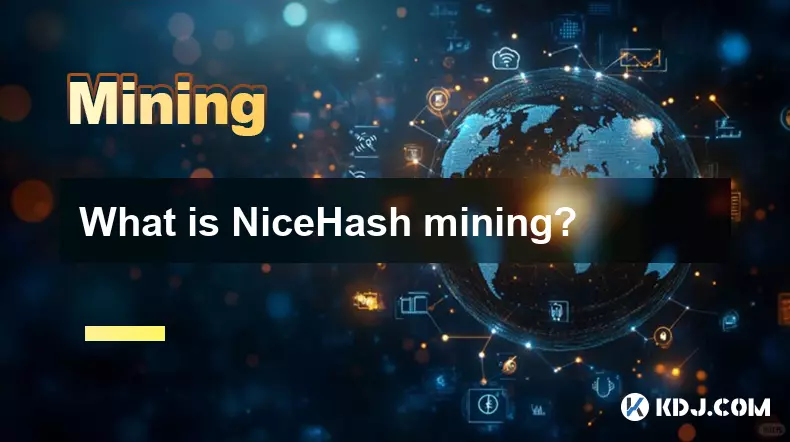-
 bitcoin
bitcoin $102877.190955 USD
1.88% -
 ethereum
ethereum $3430.435064 USD
4.52% -
 tether
tether $0.999264 USD
-0.05% -
 xrp
xrp $2.307310 USD
4.49% -
 bnb
bnb $987.740692 USD
3.82% -
 solana
solana $161.947760 USD
3.97% -
 usd-coin
usd-coin $0.999712 USD
-0.05% -
 tron
tron $0.292810 USD
2.93% -
 dogecoin
dogecoin $0.179738 USD
10.70% -
 cardano
cardano $0.580716 USD
8.75% -
 hyperliquid
hyperliquid $42.463448 USD
8.40% -
 chainlink
chainlink $15.763437 USD
7.05% -
 zcash
zcash $649.595636 USD
17.21% -
 bitcoin-cash
bitcoin-cash $511.610261 USD
7.19% -
 stellar
stellar $0.292537 USD
7.91%
What are the main components of a mining rig?
A mining rig combines GPUs, motherboard, PSU, and cooling systems to efficiently solve cryptographic puzzles and mine cryptocurrencies.
Nov 05, 2025 at 08:09 pm

Main Components of a Mining Rig
1. A mining rig consists of several essential hardware components designed to solve complex cryptographic equations required in blockchain networks. The primary component is the Graphics Processing Unit (GPU), which performs the majority of computational tasks. Multiple GPUs are often installed on a single rig to increase hashing power and efficiency.
2. The Motherboard serves as the central hub that connects all components. It must support multiple PCIe slots to accommodate several graphics cards simultaneously. Specialized motherboards like those from ASRock or Gigabyte are commonly used due to their compatibility with multi-GPU setups.
3. A reliable Power Supply Unit (PSU) is critical, as mining rigs consume large amounts of electricity. High-wattage PSUs, typically 1000W or more, are preferred to ensure stable operation across all connected GPUs and peripherals.
4. The Central Processing Unit (CPU) plays a minimal role in actual mining but is necessary for system operations. Budget-friendly CPUs are sufficient since they do not contribute significantly to hash rate performance.
5. Adequate RAM and Storage are required to run the mining operating system and software. Most rigs use lightweight Linux distributions, so 4GB to 8GB of RAM and a small SSD or USB drive for the OS are standard configurations.
Cooling and Structural Elements
1. Efficient cooling systems are vital to prevent overheating during continuous operation. This includes case fans, GPU fan upgrades, and sometimes external cooling units. Proper airflow reduces thermal throttling and extends hardware lifespan.
2. Mining rigs are often built on open-air frames made of metal or wood, allowing maximum ventilation. These mining frames hold GPUs, risers, and other parts securely while minimizing space and material costs.
3. PCIe Riser Cables connect GPUs to the motherboard, enabling flexible positioning of graphics cards. These cables extend the connection between the PCIe slot and the GPU, allowing vertical or horizontal mounting to optimize space and airflow.
4. Dust accumulation can impair performance, so many miners install dust filters or enclosures with filtered intakes. Regular cleaning routines help maintain consistent cooling efficiency over time.
5. Some advanced setups incorporate temperature monitoring tools and automatic fan control software to dynamically adjust cooling based on load and ambient conditions.
Software and Network Infrastructure
1. Miners rely on mining software such as CGMiner, Ethminer, or PhoenixMiner to interface with the blockchain network and manage hash rates. These programs allow users to configure intensity, fan speed, and power limits for optimal performance.
2. Connection to a mining pool is common, especially for individual operators. Pools combine computational resources to increase the likelihood of earning block rewards, which are then distributed proportionally among participants.
3. A stable internet connection ensures uninterrupted communication with the blockchain network. Even brief disconnections can result in lost shares and reduced profitability.
4. BIOS settings on both the motherboard and GPUs are often modified to improve stability and efficiency. Flashing GPUs with custom VBIOS can unlock higher memory clocks or reduce power consumption.
5. Security measures such as firewalls, SSH encryption, and regular software updates protect the rig from unauthorized access, especially when running headless systems remotely.
Frequently Asked Questions
What type of GPUs are most effective for cryptocurrency mining?NVIDIA GeForce RTX 3080, RTX 3090, and AMD Radeon RX 6800 XT have been widely used due to their high hash rates and relative efficiency. Older models like the GTX 1070 and RX 580 remain popular among budget miners because of their availability and decent performance-to-power ratio.
Can a mining rig be used for gaming or other tasks?While technically possible, mining rigs are optimized for sustained computational loads rather than gaming workloads. Shared resources, lack of display optimization, and potential wear on GPUs make them less ideal for gaming. Repurposing requires significant reconfiguration.
How much electricity does a typical mining rig consume?A standard six-GPU mining rig can consume between 1000W to 1400W per hour depending on the model and tuning. Power consumption varies based on GPU type, overclocking levels, and system efficiency. Monitoring tools help track real-time usage and cost implications.
Is ASIC mining still relevant compared to GPU mining?ASICs dominate in algorithms like SHA-256 used by Bitcoin, offering vastly superior efficiency. However, GPU mining remains viable for coins using Ethash, KawPow, or other memory-hard algorithms where ASIC resistance is implemented. Diversification across different mining methods allows adaptability in changing market conditions.
Disclaimer:info@kdj.com
The information provided is not trading advice. kdj.com does not assume any responsibility for any investments made based on the information provided in this article. Cryptocurrencies are highly volatile and it is highly recommended that you invest with caution after thorough research!
If you believe that the content used on this website infringes your copyright, please contact us immediately (info@kdj.com) and we will delete it promptly.
- Ripple (XRP) in 2026: Hold or Fold? A Look at XRP's Future and Emerging DeFi Alternatives
- 2025-11-08 18:35:01
- Zcash ZEC Coin Price Explosion: From Privacy Niche to Center Stage
- 2025-11-08 18:55:01
- Berachain Price Prediction: Navigating the Honeycomb Hype in Crypto
- 2025-11-08 18:55:01
- Arthur Hayes, Gold, and Bitcoin: A Modern Monetary Trinity?
- 2025-11-08 19:15:01
- Shiba Inu's Next Move: Navigating a Shifting Market
- 2025-11-08 19:20:01
- Pakistan's Crypto Crossroads: Balancing Opportunity with Asset-Backed Realities
- 2025-11-08 19:20:01
Related knowledge

What is the block reward in mining?
Nov 06,2025 at 12:35am
Understanding Block Rewards in Cryptocurrency Mining1. The block reward is the incentive miners receive for successfully validating and adding a new b...

How do mining algorithms work?
Nov 06,2025 at 04:59am
Mining Algorithms and Their Role in Blockchain Networks1. Mining algorithms serve as the backbone of blockchain consensus mechanisms, ensuring that tr...

What is NiceHash mining?
Nov 06,2025 at 07:40am
NiceHash mining refers to the process of renting out computational power to individuals or organizations seeking to mine cryptocurrencies without owni...

Does an antivirus program affect mining?
Nov 05,2025 at 09:29pm
Understanding Decentralized Exchanges in the Crypto Ecosystem1. Decentralized exchanges (DEXs) operate without a central authority, allowing users to ...

What is the history of Bitcoin mining?
Nov 05,2025 at 08:15pm
Within the fast-moving world of cryptocurrency, new developments emerge daily, reshaping how investors, developers, and institutions interact with dig...

How is the energy consumption of mining justified?
Nov 05,2025 at 10:20pm
Energy Consumption in Cryptocurrency Mining1. The energy consumption associated with cryptocurrency mining has drawn significant attention from enviro...

What is the block reward in mining?
Nov 06,2025 at 12:35am
Understanding Block Rewards in Cryptocurrency Mining1. The block reward is the incentive miners receive for successfully validating and adding a new b...

How do mining algorithms work?
Nov 06,2025 at 04:59am
Mining Algorithms and Their Role in Blockchain Networks1. Mining algorithms serve as the backbone of blockchain consensus mechanisms, ensuring that tr...

What is NiceHash mining?
Nov 06,2025 at 07:40am
NiceHash mining refers to the process of renting out computational power to individuals or organizations seeking to mine cryptocurrencies without owni...

Does an antivirus program affect mining?
Nov 05,2025 at 09:29pm
Understanding Decentralized Exchanges in the Crypto Ecosystem1. Decentralized exchanges (DEXs) operate without a central authority, allowing users to ...

What is the history of Bitcoin mining?
Nov 05,2025 at 08:15pm
Within the fast-moving world of cryptocurrency, new developments emerge daily, reshaping how investors, developers, and institutions interact with dig...

How is the energy consumption of mining justified?
Nov 05,2025 at 10:20pm
Energy Consumption in Cryptocurrency Mining1. The energy consumption associated with cryptocurrency mining has drawn significant attention from enviro...
See all articles





















![The Graph Price Prediction [GRT Crypto Price News Today] The Graph Price Prediction [GRT Crypto Price News Today]](/uploads/2025/11/07/cryptocurrencies-news/videos/690d4df44fe69_image_500_375.webp)



















































